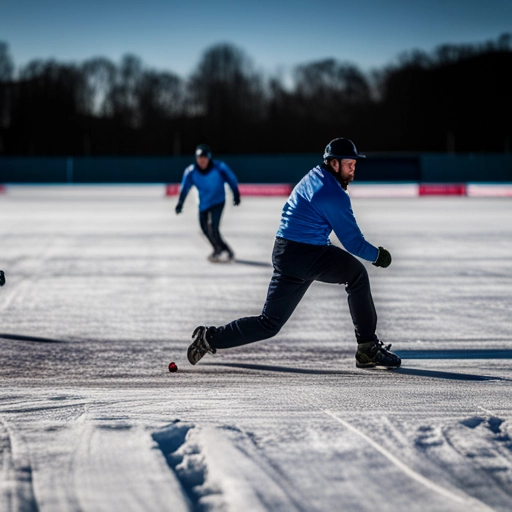Ice cricket is a variant of traditional cricket played on frozen surfaces, often lakes or ice-covered grounds, in regions with cold winters. The rules of ice cricket can vary depending on local customs and preferences, but here are some general guidelines that are commonly followed in informal ice cricket matches:
Playing Surface: Ice cricket is played on a frozen lake or ice-covered ground. The surface should be cleared of snow and smoothed to create a relatively flat playing area. The thickness and quality of the ice are crucial for safety.
Teams: Ice cricket can be played with two teams, each consisting of 11 players, similar to traditional cricket.
Equipment: Specialized equipment may be used to adapt to the icy conditions. This can include cricket bats with modified grips for better control, stumps with longer spikes to anchor into the ice, and balls designed to perform on ice.
Overs: The number of overs per innings can vary, but it is often shorter than in traditional cricket to accommodate the slower pace of play on ice.
Bowling: Bowlers may have to adjust their approach due to the hard surface of the ice. The cricket ball tends to stay low and skid rather than bounce, so bowlers need to adapt their line, length, and pace accordingly.
Scoring: Scoring in ice cricket is typically the same as in traditional cricket, with runs scored by running between wickets, hitting boundaries (if defined), and taking wickets.
Boundaries: The boundaries (the area within which a ball is considered in play) may be marked differently on ice, using cones or other markers. Boundaries can be adjusted depending on the available space and conditions.
Fielding: Fielders must wear appropriate winter clothing and footwear, including ice cleats or spikes, to prevent slipping. The icy surface can make fielding challenging, so fielders need to be agile and cautious.
Wicketkeeping: Wicketkeepers may wear additional padding to protect against the cold, and they should be prepared for low deliveries due to the lack of bounce on ice.
Umpiring: Umpires are responsible for making decisions based on the rules agreed upon by both teams before the match. The number of on-field umpires can vary, depending on the level of formality.
Safety: Safety precautions are paramount in ice cricket. Players should be aware of the thickness and stability of the ice to ensure it can support their weight. Organizers should monitor the ice conditions regularly during the game. Additionally, first aid and rescue equipment may be on hand in case of emergencies.
Local Rules: Depending on the location and organizers, there may be local rules and adaptations to traditional cricket rules to suit the conditions and ensure fair play. It’s essential for players to be familiar with these rules before participating.
It’s important to note that ice cricket is typically played as a recreational and community-based sport, so the rules can vary widely based on local customs and preferences. Official governing bodies for cricket, such as the International Cricket Council (ICC), do not oversee ice cricket, as it remains a niche and localized form of the game. Therefore, participants often have the flexibility to adapt the rules to suit their specific circumstances.


